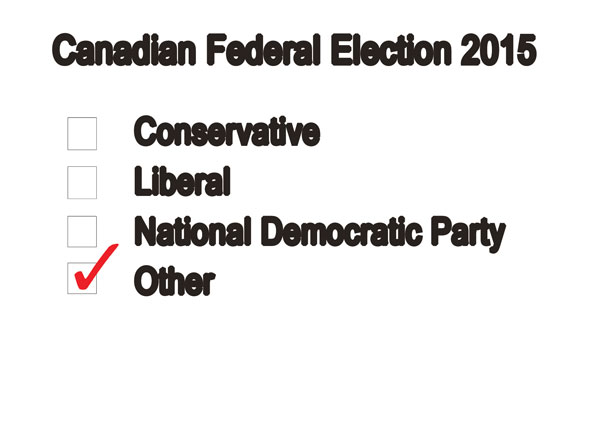This election could be the last using first-past-the-post
Photo: Kim Wiens
The coming federal election has generated a lot of buzz around issues like Bill C-51, legalization of marijuana, and the role of the Canadian Senate. One fact that tends to get lost among all this is that two of the leading political parties, the Liberals and the NDP, have both committed to overhauling the current electoral system and replacing it with proportional representation.
This could be the last election in Canadian history to use the first past the post system, a system where all that matters is who a majority of voters in a single riding support.
Proportional representation systems are already in use in several countries around the world, most notably Germany. The system that the NDP are advocating is called a mixed member system, and involves voters voting both for a local candidate and then for a federal party. Candidates who win a local majority get a seat in parliament, similar to the current system, while parties are awarded additional seats based on their percentage of the vote. These additional seats are filled with candidates from official party lists.
The Liberal party has announced that they will support the creation of a committee to determine what types of electoral reforms should be made. They have promised to pass laws supporting whatever the committee’s findings are.
Proportional representation has the possibility of introducing a whole new cast of political parties to the scene. There are over a dozen registered federal political parties in Canada outside of the Conservatives, Liberals, and NDP. Many of them have never had seats in parliament and in fact remain little known to most voters.
Most voter knowledge of the political fringe is limited to the Green Party and the Bloc Québécois, but there’s a whole realm of other parties out there. From the satirical Rhino Party, which has proposed nationalizing Tim Hortons, the Pirate Party, which is focused on updating copyright law, to the more serious Bridge Party, which is committed to reforming the electoral system.
In the 2011 election the Bloc Québécois, Green and smaller parties combined received less than 11 per cent of the vote, with the smaller parties getting less than 1 per cent. While these parties may not be a large part of the current political landscape they very well could be under a proportional representation style of election.
These parties are all able to propose more unconventional ideas and policies that more mainstream parties never would, out of fear of losing voters. Canada needs a proportional representation system because not only is it more fair to voters, but it also helps stimulate political change.
If voters can cast a vote for both a candidate and a different party then they can have an impact on their community as well as national issues. Under this new system the Green party could get more than one seat, even though in the last election it received over 572,000 votes.
Given seats in Parliament, smaller parties could bring some of their policies into action, bring them to the forefront of politics and have a larger impact. This would also force accountability among the larger parties, who sometimes take their influence on Canadian society for granted.
However a possible danger of proportional representation is that it can give power to parties who don’t have the best ideas. There’s a reason why these parties are on the fringe and not currently running the country. But a new electoral system could succeed in bringing fresh and new ideas to improve the lives of Canadians.






